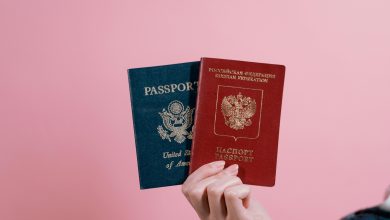
Visa and Work Permit: What’s the Difference?
If you’re planning to work in another country, you’ll often encounter two key terms: visa and work permit. While they are closely related and often used together, they are distinct in their purpose and function. Understanding the difference is crucial to ensuring a smooth move abroad.
Let’s break it down.
What Is a Visa?
A visa is an official document issued by a country that allows a foreign national to enter, stay, or leave its territory. Think of it as your “entry ticket” to a country. Depending on your purpose for visiting, there are several types of visas, such as tourist visas, student visas, and—most importantly for our topic—work visas.
- Purpose: Grants permission to enter a country.
- Issued By: Usually stamped or attached to your passport by the consulate or embassy of the destination country.
- Types: Tourist, student, business, and work visas, among others.
For example, if you’re moving to Canada for a job, you’ll likely need a work visa to legally enter the country and start your employment.
What Is a Work Permit?
A work permit is a separate authorization that allows you to take up employment in a foreign country. While a visa gives you the right to enter, a work permit ensures that you can legally work there. Some countries issue a work permit alongside a work visa, while others treat them as distinct documents requiring separate applications.
- Purpose: Authorizes you to work in the country.
- Issued By: The immigration or labor department of the destination country.
- Requirement: Often tied to a specific employer or job role.
For instance, in Germany, obtaining a visa to enter the country is just the first step; you’ll also need a work permit to legally perform your job duties.
How Do They Work Together?
In many cases, a visa and a work permit are both necessary for working abroad. The process typically looks like this:
- Get a Job Offer: Many countries require a job offer before issuing a work permit or work visa.
- Apply for a Visa: Use your job offer or supporting documents to apply for a work visa.
- Secure a Work Permit: In some countries, you must apply for the work permit after you arrive; in others, it’s processed simultaneously with your visa.
Key Differences Between Visa and Work Permit
| Feature | Visa | Work Permit |
|---|---|---|
| Purpose | Allows entry into the country | Grants legal authorization to work |
| Issued By | Embassy or consulate | Immigration or labor department |
| Focus | Travel and residence | Employment |
| Validity | May not always include work rights | Specific to employment |
Are There Exceptions?
Some countries combine the visa and work permit into a single document. For example, the United Arab Emirates issues a residence visa that allows you to live and work in the country. On the other hand, some nations, like the United States, require distinct applications for a visa (e.g., H-1B) and a work permit (e.g., Employment Authorization Document for certain visa holders).
Tips for Navigating the Process
- Research Your Destination: Each country has unique requirements, so understanding them early can save you time.
- Check Employer Obligations: In many cases, your employer may handle part of the application process.
- Seek Expert Help: Immigration laws can be complex. Consider consulting with an immigration lawyer or agent.



